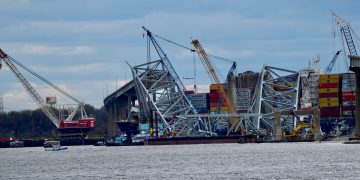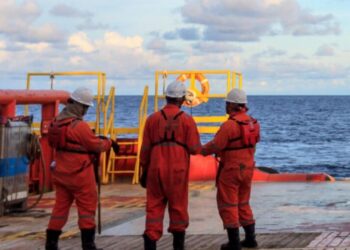A near-miss management system in shipping offers one of the most valuable instruments for improving safety onboard seagoing ships. But according to a paper published in 2020, having surveyed 250 participants, near-miss reporting can be inadequate, and several barriers limit appropriate near-miss reporting.
Probably the most important result of the survey is that 95.5% of seafarers consider that near-misses should be reported, but only 38.5% report each observed near-miss. This confirms the existence of reporting barriers among seafarers.
Barriers to near-miss reporting
- Being ashamed, not blamed. Reporting is thought to be showing personal capabilities of carrying out the job, thus “exposing one’s skills”.
- Matter of age. Some think that it is hard to make older seafarers to report some happenings.
- Time restriction, especially from the ratings’ side.
- Pure laziness and nature of seafarers who are used to take actions immediately but not put it as a report officially.
- Ignorance by the people to whom the near-miss is told. If the officer or master doesn’t show attention to what an AB reports, that person stops reporting after some time.
- ‘Nothing is wrong in my ship’ approach.
- Interpretations of rules are made differently by the countries. Therefore, it is hard to build up a common behavior to safety thinking.No clear definition of near miss – Not being sure of what to report and not to report.
- Time restriction for officers, especially for the master and chief officer, due to having unrelated duties which prevent them to spend time with the ratings. If they have more time, they will increase ratings’ awareness of safety by communicating more.
How to create a successful near-miss reporting
#1 Commitment. If the company is not committed to promote reporting, it is not likely that reporting is carried out on ships either. Some ways to show commitment include, for example, the allocation of adequate resources for carrying out, processing and analyzing the reports, maintaining good communication within the company and tackling problems concerning reporting if there appears to be any.
#2 Feedback. If employees do not receive feedback concerning their reports, they become frustrated and feel that the system is of no use. Those who make reports should be actively asked to recommend improvements for the prevention of the event in the future. This benefits the feeling of involvement, competence and participation and it also helps to create improvements that are practical to implement. Sharing feedback in the regular meetings seems to be an effective way to give feedback on the reports and to share experiences.
#3 No-blame culture. If an employee fears that he/she will be accused or ridiculed after the incident, it is unlikely that he/she will make a report. One part of no-blame culture is to not trivialize received reports. It is very important to consciously become aware of that the purpose of incident reporting is to learn from mistakes and incidents at the organizational level. Everybody makes mistakes. The no-blame culture is important both at company level and at ship level.
#4 Communication on board. The role model of the ship Master and other officers is important for the promotion of good communication onboard. Formal (safety) meetings and informal meetings are also important for good communication. One part of good communication is also that possible problems in communication are addressed and effort is made to solve them. Good communication can be promoted also by paying attention to the work teams and the length of contracts. If employees in a work team change continuously, this can prevent the development of good communication.
#5 Awareness and commitment. Creating safety awareness not only supports a good reporting culture, but it also raises the safety level onboard in other aspects. If crew members are not aware of safety issues, they see, for instance, near misses as a normal part of the job and are not likely to take procedures to avoid them.
#6 Training. Training is needed, for example, to define what is considered as a near miss or an incident that needs to be reported, to familiarize the crew with the reporting system, to communicate the importance of incident reporting and to raise safety awareness.
#7 Easy-to-use system. The reporting form should not be excessively complicated or difficult and time-consuming to fill in. If a majority of reports are made openly, additional information can be asked afterwards if necessary.
#8 Anonymity. If there is a no-blame culture within the company, people feel safe to report using their own name, but it is also good to have the possibility to report anonymously in order to bring out cases, which cannot be reported openly for some reason. For a shared reporting system, it is important that anonymity is guaranteed in the processing of a report, although reporting in itself cannot be performed anonymously.
How to prevent near misses
- Keep alert for hazards while you work and as you move around the ship.
- Follow safety rules and wear required personal protective equipment (PPE).
- Report any hazards you see anywhere onboard the ship to an Officer right away. If you can do so safely, remove the hazard, but still report it.
- Participate in safety training and use the information and skills you learn on the job.
- Practice the Stop Work Authority. Speak up if you see a crewmember taking risks or unsafe conditions being present.
Stop Work Authority (SWA): A tool towards safety
The SWA gives the crewmembers the responsibility and obligation to intervene and stop work if they see something unsafe that may cause an accident.
The 5 steps of SWA
- Stop: When a crewmember perceives condition(s) or behavior(s) that pose imminent danger to person(s), equipment or environment he or she must immediately initiate a stop work intervention with the person(s) potentially at risk. The stop work action should be clearly identify as a stop work action and initiated in a non-combative manner.
- Notify: Notify affected crewmembers and Officer in Charge of the stop work action. If necessary, stop work activities that are associated with the work area in question. Make the area(s) as safe as possible by addressing the issue.
- Discuss: Affected crewmembers will discuss the situation and their concerns and come to an agreement on the corrective action as necessary.
- Resume: If all parties come to an agreement the condition or behavior is safe to proceed, the affected crewmembers should show appreciation to the SWA initiator for their concern and then resume work.
- Follow-Up: Share what has been learned with other crewmembers who might be affected.
Be confident, speak up!
Even though all crewmembers onboard the ship, regardless of rank, have the right and liberty to exercise SWA, this is not always the case and there are many reasons why a person might not speak up or stop work:
-They see others not acting and think they have a reason
-More experience people around them are not doing anything
-They think they have misread the situation
-They worry about upsetting a co-worker by calling attention to an unsafe situation
-They think they do not have authority
-They feel if they are wrong, it could get them in trouble
-They think they could make a situation worse
In order to build people’s confidence to act, those with leadership roles onboard should:
√ Take action themselves to step back, slow, pause or stop
√ Encourage people to ask for help and work as teams to solve problems
√ Always support a decision to step back, slow, pause or stop
√ Thank and recognize even when it turns out that there is not a problem


































































Excellent contribution to the safety culture. I am amazed that with all our safety training there is no debate on the safety of the COVID-19, no risk assessments, no stop work demanding evidence of “safe and effective”. The first line in emergency training briefs is “don’t rush” and here we are rushing the science on what is still officially still in clinical trials. Do we have double standards when it comes to safety? Perhaps our proud culture of safety first just got railroaded!